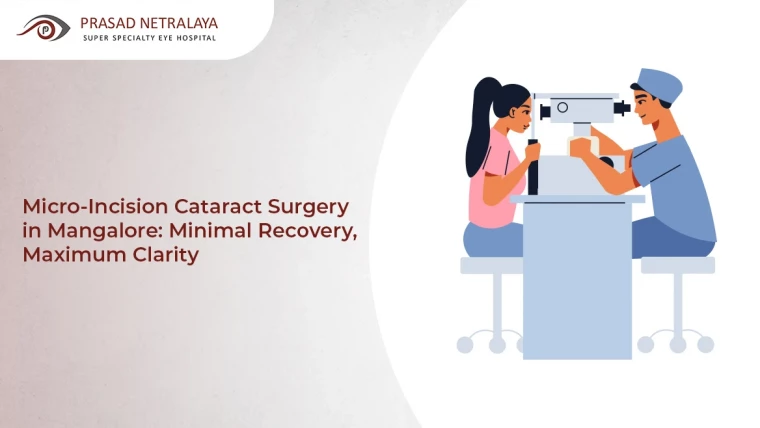It is true that cataract most commonly affects adults after the age of 40-50 years, but it is a less known fact that it can affect Cataract in children and children as well. There is no minimum age of when a person can be affected by this eye condition.
A cataract is a clouding of the eye’s natural lens, which lies behind the iris and the pupil. Some children are born with it and some develop it as they grow older. If you think that it might go away as your child grows, it is not true. Ignoring cataract during a child’s formative years can lead to long-term vision problems in your child.
How does a child get affected by Cataract?
The most common cause is genetics. A child can inherit this condition from his/her mother or father who have cataract themselves.
Congenital cataract is caused by certain infections that the mother may have picked up during her pregnancy, like chicken pox or rubella virus. Other causes could be Down’s syndrome or an eye injury, diabetes, steroids, and any complications due to eye problems. There are various reasons as to why a child is born with it or develops it at a young age. Not all the causes are known, yet.
What are the types of Cataracts that affect children?
Some of the most common types of cataracts found in children are as follows.
Congenital Cataracts:
Congenital cataract is a condition that occurs at the birth of a child or soon thereafter. While in some cases it may not progress, in other cases it can cause visual impairment, squint eye, and various long-term vision problems.
Developmental, infantile or juvenile Cataracts:
This means that the child can develop cataracts while his/her brain and eyes are still developing and they learning to identify things around them. This can affect infants and children as they grow up.
What are the symptoms of Cataract in children to look out for?
Since it is difficult to spot the signs of cataract in new born babies, the baby’s eyes are routinely checked during the first 3 days after birth and again 6 to 8 weeks after that. Some children may develop cataracts after the initial examinations.
We suggest you to keep an eye on your child and notice if your child has poor vision where he/she may not be able to recognize or follow objects and people with their eyes, or has wobbling eyes, squint eyes, and/or a grey or white pupil.
If your child has a grey or white pupil, it could lead to severe and irreversible damage to the eyes like retinoblastoma, permanent lazy eye, and blindness in extreme cases.
What is the treatment for Cataract in children?
At present, cataract surgery is the best treatment available.
Does the surgery involve implanting an intraocular lens like it’s done in adults?
A lens needs to be implanted. But the implantation can be done only in children above the age of 2 years.
For alternative treatments for your child’s eyes, eye doctors will be able to suggest the right treatment after examining the eyes thoroughly.
Protect your child’s vision and prevent blindness and other long-term damages by visiting your nearest branch of Prasad Netralaya Super Specialty Eye Hospitals or booking an appointment by filling this quick form .You can also call our Toll-free number 1800-4251-919 or our Mobile no. 09513576565
At Prasad Netralaya Super Specialty Eye Hospital, we provide highly effective and affordable treatments for you and your loved ones. Here you will find the best team of eye doctors, nurses, and staff, who are trained thoroughly in using advanced equipments, medicine and will provide you with the optimum eye care.
Walk into any of our branches in M.G. Road, Lalbagh or near Mahakali Temple, Pumpwell Ujjodi, in Mangalore city, or Udupi, Sullia and Tirathalli to get your eyes checked today.



